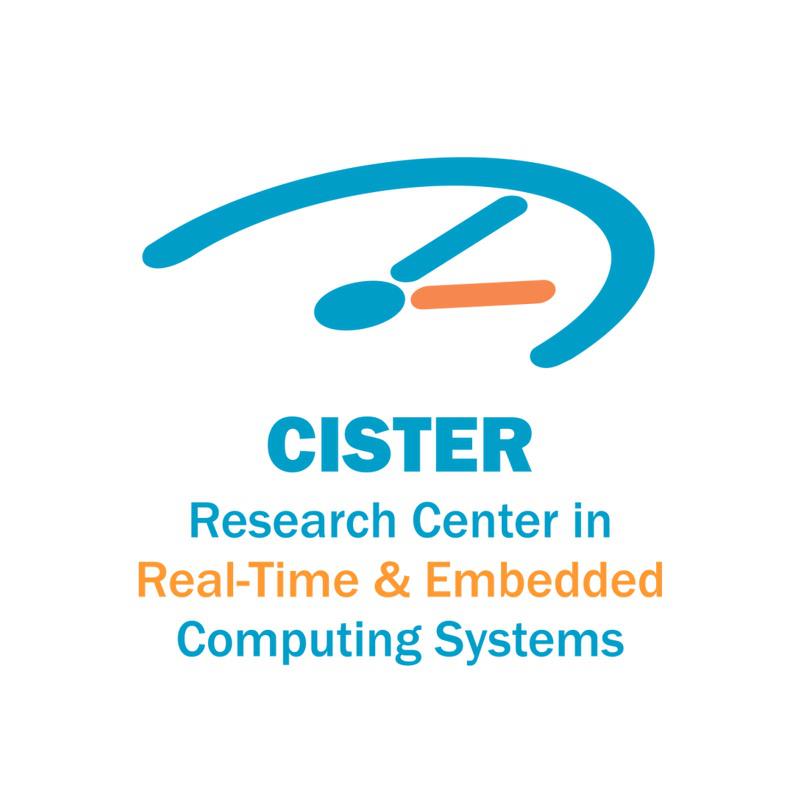 WiSe-CAN
WiSe-CAN
WiSe-CAN
| CISTER/RF02/2006 5 years (Jul 2006 to Jun 2011) http://www.hurray.isep.ipp.pt/activities/WISE-CAN/ | |
| Summary: | In WiDOM, as in any dominance-based protocol, the MAC protocol elects the computer node with the highest priority (lowest number) and gives it access to the medium. This election procedure can also be used to compute the minimum value of sensor readings distributed on different computer nodes and, remarkably, this computation can be performed with a time-complexity that is independent of the number of computer nodes. This procedure forms an important building block for other useful calculations; for example, it is possible to efficiently extract an interpolation of sensor readings and this can be performed with a time-complexity that is independent of the number of computer nodes. This is a crucial asset for addressing problems in future Large-Scale Dense Sensor Networks for Cyber-Physical Systems (CPS). In this way, we are addressing important challanges in Cyber-Physical Systems such as: (i) scalable architectures and; (ii) the integration of physical dynamics with computations and communications. The CAN bus is an example of a commercial-off-the-shelf (COTS) technology that offers a prioritized MAC protocol based on the binary countdown / dominance protocol. CAN is used in a wide range of applications, ranging from vehicles to factory-automation. Its wide application fostered the development of robust error detection and fault confinement mechanisms, while at the same time maintaining its cost effectiveness. An interesting feature of CAN is that the maximum length of a bus can be traded-off for lower data rates. It is possible to have a CAN bus with a bit rate of 1Mbit/s for a maximum bus length of 30 meters, or a bus 1000 meters long (with no repeaters) using a bit rate of 50 Kbit/s. While the typical number of nodes in a CAN bus is usually smaller than 100, with careful design (selecting appropriate bus-line cross section, drop line length and quality of couplers, wires and transceivers) of the network it is possible to go well above this value (which is often also imposed by the software of the CAN transceivers). We have been using CAN for efficient distributed computation of aggregated quantities. The use of such a prioritized MAC protocol is proposed to be in a way that priorities are dynamically established during runtime as a function of the sensed values involved in the specific distributed computation. |
| Sponsors: |  |
| Partners: | |
| CISTER Project Information: | http://www.hurray.isep.ipp.pt/activities/WISE-CAN/ |
. . . . . . . . . . . . . . . . . . . . . . . . . . . . . . . . . . . . . . . . . . . . . . . . . . . . . . . . . . . . . . . . . . . . . . . . . . . . . . . . . . . . . . . . . . . . . . . . . . . . . . . . . . . . . . . . . . . . . . . . . . . . . . . . . . . . . . . . . . . . . . . . . . . . . . . . . . . . . . . . . . . . . . . . . . . . . . . . . . . . . . . . . . . . . . . . . . . . . . . . . . . . . . . . . . . . . . . . . . . . . . . . . . . . . . . . . . . . . . . . . . . . . . . . . . . . . . . . . . . . . . . . . . . . . . . . . . . . . . . . . . . . . . . . . . . . . . . . . . . .
Thesis
Efficient Aggregate Computations in Large-Scale Dense Wireless Sensor Networks HURRAY-TR-100905
Nuno PereiraPhD Thesis. 10, Sep, 2010. Braga, Portugal.
Nuno PereiraPhD Thesis. 10, Sep, 2010. Braga, Portugal.
Journal Papers
Efficient Computation of MIN and MAX in Multihop Networks (by exploiting a prioritized MAC protocol) HURRAY-TR-080901
Nuno Pereira, Björn Andersson, Eduardo Tovar, Paulo Manuel Martins de CarvalhoIntelligent Technical Systems, Springer Netherlands. 1, Apr, 2009, Volume 38. Part V, pp 233-246. Netherlands.
Nuno Pereira, Björn Andersson, Eduardo Tovar, Paulo Manuel Martins de CarvalhoIntelligent Technical Systems, Springer Netherlands. 1, Apr, 2009, Volume 38. Part V, pp 233-246. Netherlands.
Conference or Workshop Papers/Talks
Elements of Scalable Data Processing HURRAY-TR-100510
Björn Andersson, Paulo Gandra de Sousa, Filipe Pacheco, Vinny Reynolds, Panayiotis Andreou, Pedro J. Marrón, Pedro J. Marrón9th International Workshop on Real-Time Networks (RTN 2010). 6, Jul, 2010. Brussels, Belgium.In conjunction with the 22th Euromicro Intl Conference on Real-Time Systems, July 7-9
Björn Andersson, Paulo Gandra de Sousa, Filipe Pacheco, Vinny Reynolds, Panayiotis Andreou, Pedro J. Marrón, Pedro J. Marrón9th International Workshop on Real-Time Networks (RTN 2010). 6, Jul, 2010. Brussels, Belgium.In conjunction with the 22th Euromicro Intl Conference on Real-Time Systems, July 7-9
Improving the Reliability of WiDom in a Single Broadcast Domain HURRAY-TR-090610
Nuno Pereira, Björn Andersson, Eduardo Tovar, Paulo Manuel Martins de CarvalhoWork in Progress Session, IEEE Symposium on Industrial Embedded Systems (SIES'09), IEEE. 8 to 10, Jul, 2009, pp 144-147. Lausanne, Switzerland.
Nuno Pereira, Björn Andersson, Eduardo Tovar, Paulo Manuel Martins de CarvalhoWork in Progress Session, IEEE Symposium on Industrial Embedded Systems (SIES'09), IEEE. 8 to 10, Jul, 2009, pp 144-147. Lausanne, Switzerland.
A Vision of Cyber-Physical Internet HURRAY-TR-070905
Anis Koubâa, Björn Andersson8th International Workshop on Real-Time Networks (RTN'09). 1 to 3, Jul, 2009. Dublin, Ireland.
Anis Koubâa, Björn Andersson8th International Workshop on Real-Time Networks (RTN'09). 1 to 3, Jul, 2009. Dublin, Ireland.
Using a Prioritized Medium Access Control Protocol for Incrementally Obtaining an Interpolation of Sensor Readings HURRAY-TR-090704
Björn Andersson, Nuno Pereira, Eduardo Tovar, Ricardo F. T. Gomes7th Workshop on Intelligent Solutions in Embedded Systems (WISES'09), IEEE. 25 to 26, Jun, 2009, pp 29-36. Ancona, Italy.
Björn Andersson, Nuno Pereira, Eduardo Tovar, Ricardo F. T. Gomes7th Workshop on Intelligent Solutions in Embedded Systems (WISES'09), IEEE. 25 to 26, Jun, 2009, pp 29-36. Ancona, Italy.
Efficient Aggregate Computations in Large-Scale Dense WSN HURRAY-TR-081101
Nuno Pereira, Ricardo F. T. Gomes, Björn Andersson, Eduardo Tovar15th IEEE Real-Time and Embedded Technology and Applications Symposium (RTAS 2009), IEEE. 13 to 16, Apr, 2009, pp 317-326. San Francisco, CA, U.S.A..
Nuno Pereira, Ricardo F. T. Gomes, Björn Andersson, Eduardo Tovar15th IEEE Real-Time and Embedded Technology and Applications Symposium (RTAS 2009), IEEE. 13 to 16, Apr, 2009, pp 317-326. San Francisco, CA, U.S.A..









 PDF
PDF